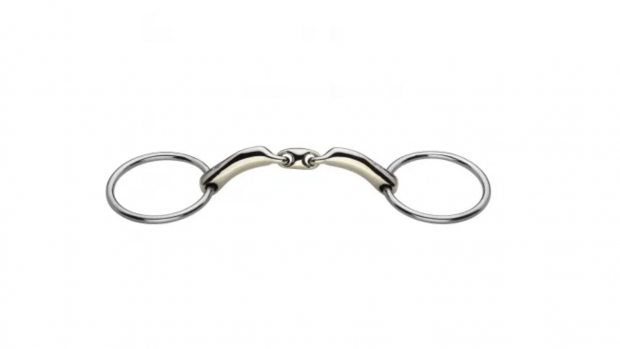Sweet iron, or black iron as it is sometimes called, has been used in bitting by generations of American cowboys. One of its greatest fans is Monty Roberts.
“I always use sweet iron snaffles on my young horses, they seem to enjoy the taste and the design encourages them to take the bit and carry it correctly,” says Monty.
The stainless steel rings are heavier than traditional English bits to encourage better feel and merge into an iron mouthpiece with copper inlays. Since the mouthpiece is made of iron, some rusting takes place, but the manufacturers say this is when the taste concept comes into its own.
By combining the sweet taste of iron with the sour tang of copper, horses who are strong, tense or heavy in the hand become lighter and more responsive, a claim which isbacked up by show jumper William Funnell.
“I had one of these bits to try at home. I now have six and use them in competition, too,” says William. “Horses ‘mouth up’ better and become more responsive in them. They are probably not any kinder than, say, an ordinary thick snaffle, but the horses do seem to enjoy them more.”
In addition to the loose-ring snaffles, William also uses the increasingly popular “cowhorse gag“, which has central copperrollers to aid salivation and short cheeks.
“They look sharper than they actually are. I use two reins and because I am getting a more responsive contact, I can use the bottom rein to help lighten the forehand. I don’t like bits with a lot of leverage, as this can frighten a horse and cause him to overbend.
“I haven’t found a horse who doesn’t go well in a sweet iron bit. If a horse is happy with its bit I won’t change it, but I would recommend these bits for youngsters,” says William.
Read more about bits and bitting:




